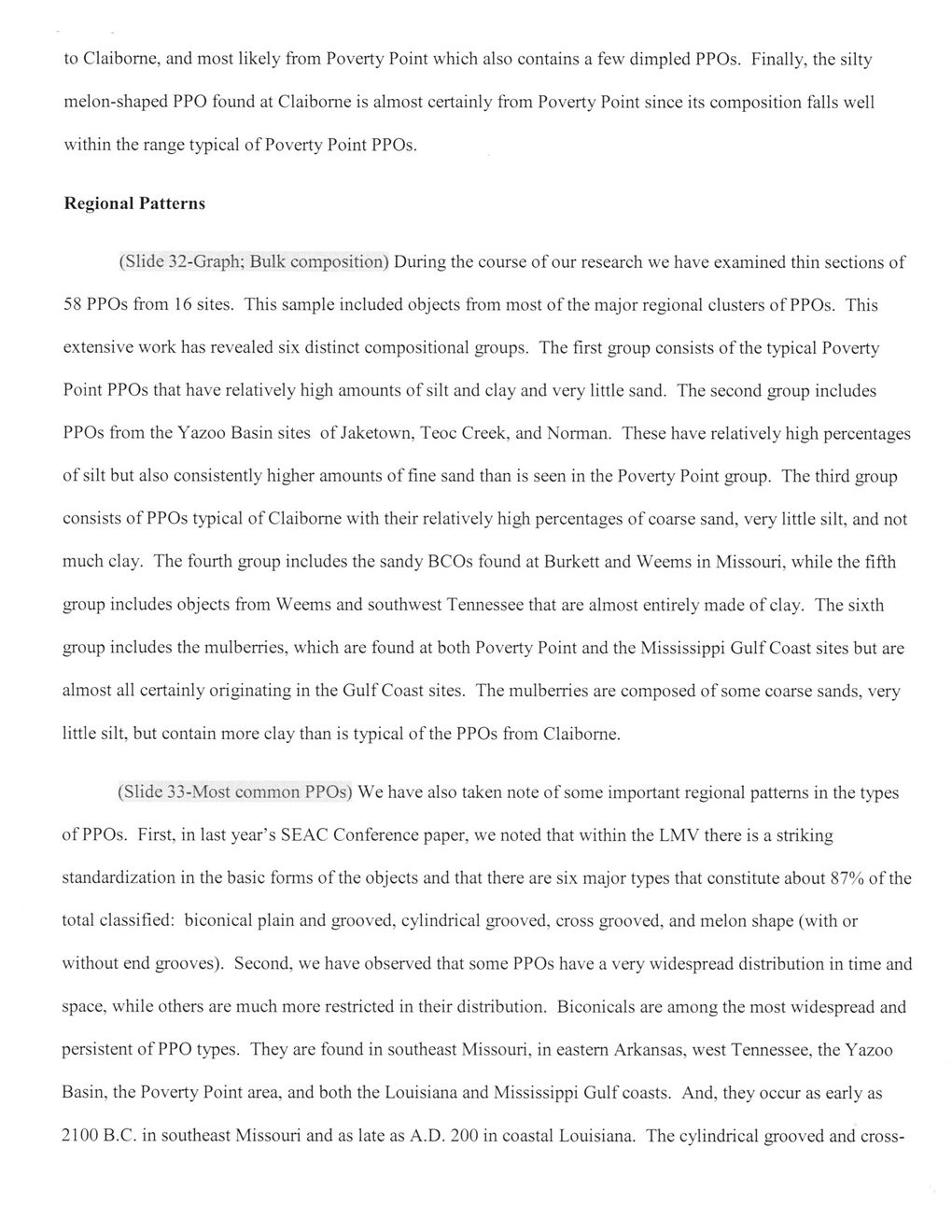This text was obtained via automated optical character recognition.
It has not been edited and may therefore contain several errors.
to Claiborne, and most likely from Poverty Point which also contains a few dimpled PPOs. Finally, the silty melon-shaped PPO found at Claiborne is almost certainly from Poverty Point since its composition falls well within the range typical of Poverty Point PPOs. Regional Patterns (Slide 32-Graph; Bulk composition) During the course of our research we have examined thin sections of 58 PPOs from 16 sites. This sample included objects from most of the major regional clusters of PPOs. This extensive work has revealed six distinct compositional groups. The first group consists of the typical Poverty Point PPOs that have relatively high amounts of silt and clay and very little sand. The second group includes PPOs from the Yazoo Basin sites of Jaketown, Teoc Creek, and Norman. These have relatively high percentages of silt but also consistently higher amounts of fine sand than is seen in the Poverty Point group. The third group consists of PPOs typical of Claiborne with their relatively high percentages of coarse sand, very little silt, and not much clay. The fourth group includes the sandy BCOs found at Burkett and Weems in Missouri, while the fifth group includes objects from Weems and southwest Tennessee that are almost entirely made of clay. The sixth group includes the mulberries, which are found at both Poverty Point and the Mississippi Gulf Coast sites but are almost all certainly originating in the Gulf Coast sites. The mulberries are composed of some coarse sands, very little silt, but contain more clay than is typical of the PPOs from Claiborne. (Slide 33-Most common PPOs) We have also taken note of some important regional patterns in the types of PPOs. First, in last year’s SEAC Conference paper, we noted that within the LMV there is a striking standardization in the basic forms of the objects and that there are six major types that constitute about 87% of the total classified: biconical plain and grooved, cylindrical grooved, cross grooved, and melon shape (with or without end grooves). Second, we have observed that some PPOs have a very widespread distribution in time and space, while others are much more restricted in their distribution. Biconicals are among the most widespread and persistent of PPO types. They are found in southeast Missouri, in eastern Arkansas, west Tennessee, the Yazoo Basin, the Poverty Point area, and both the Louisiana and Mississippi Gulf coasts. And, they occur as early as 2100 B.C. in southeast Missouri and as late as A.D. 200 in coastal Louisiana. The cylindrical grooved and cross-

Claiborne Historical Site Guerin-Giardino-(043)